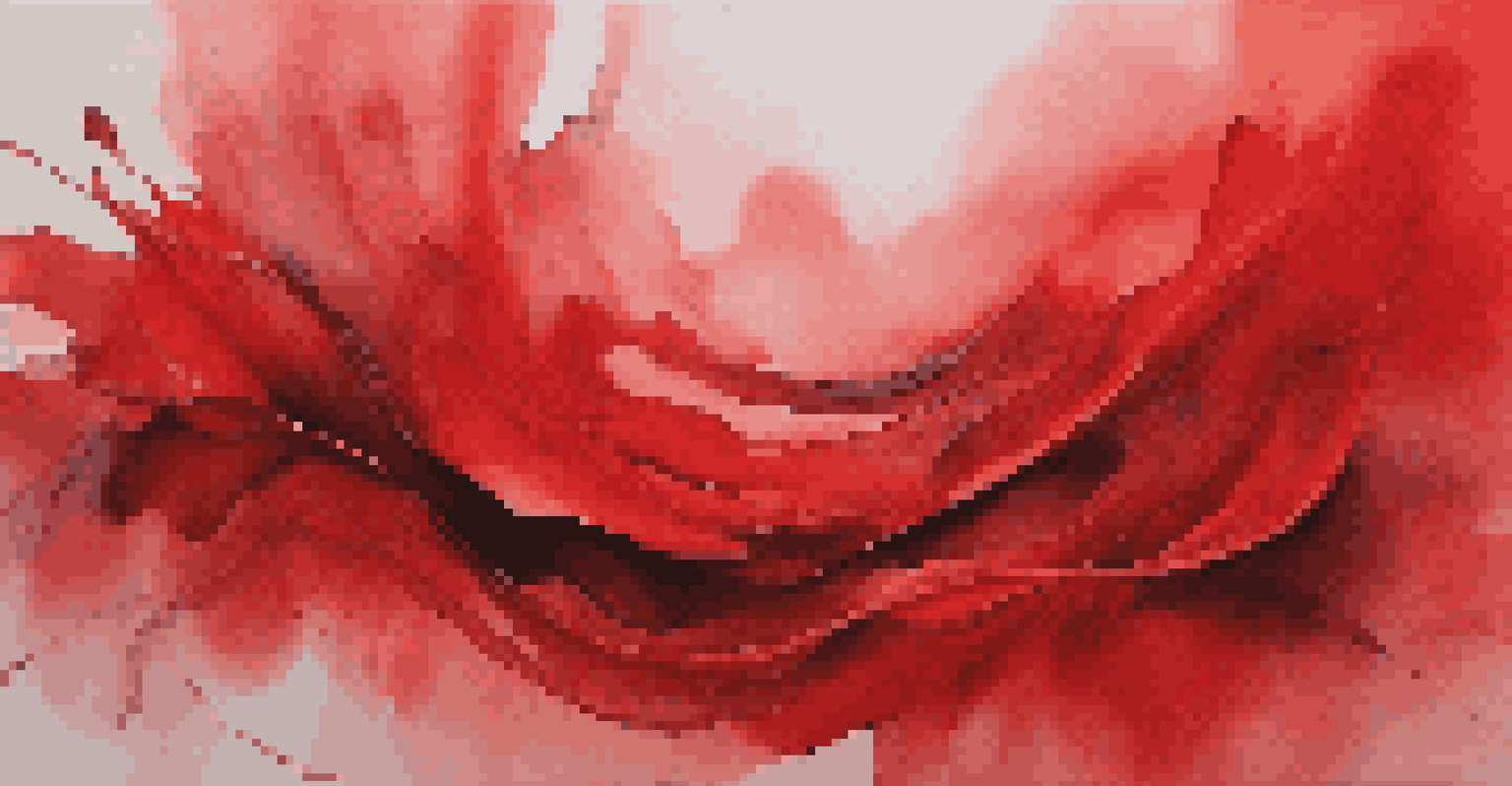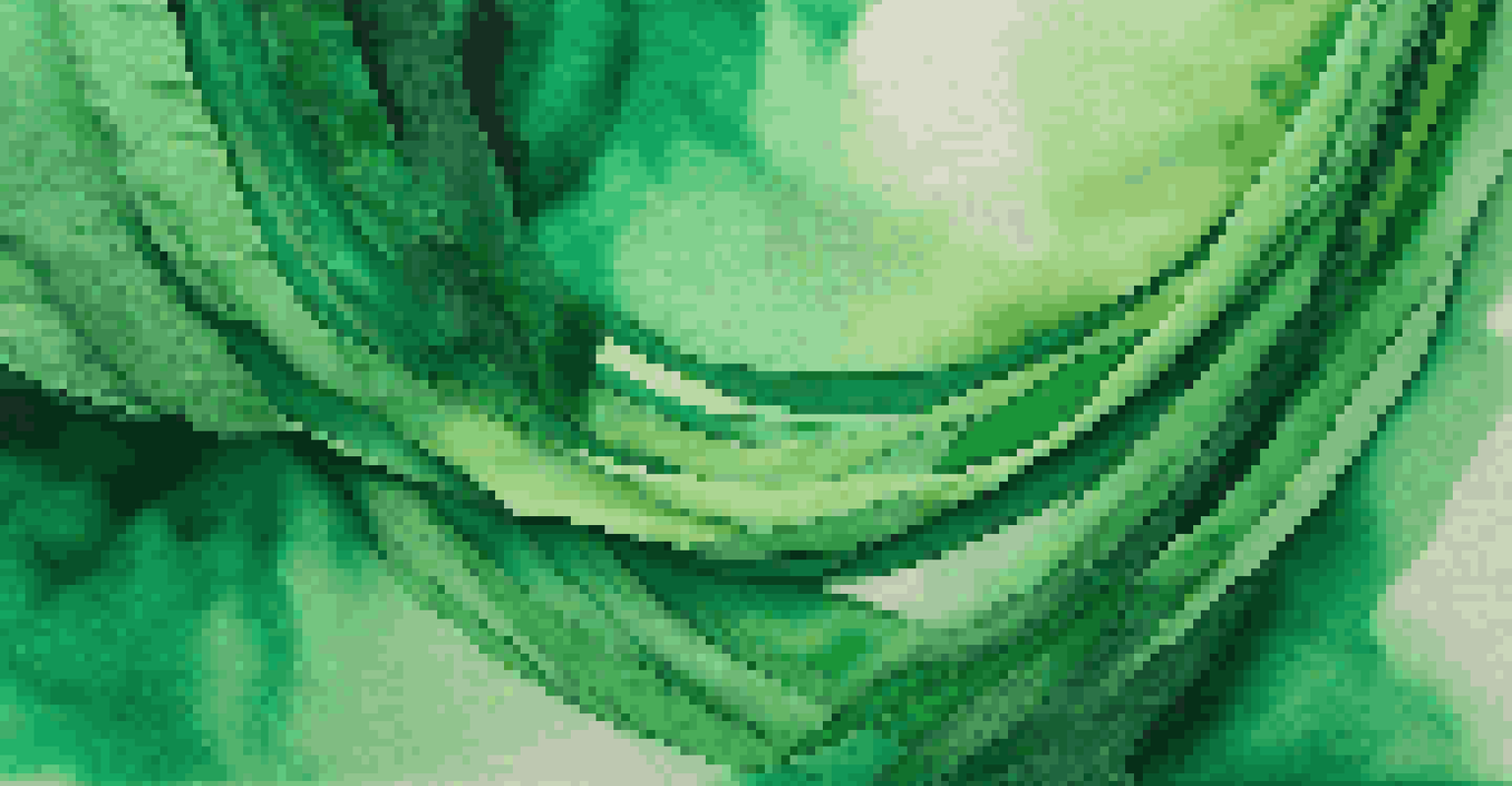Exploring Monochromatic Art: Emotional Depth Through Color

Understanding Monochromatic Art and Its Appeal
Monochromatic art, as the name suggests, revolves around a single color and its variations in hue, saturation, and brightness. This artistic approach creates a unique visual experience that often evokes strong emotions. By focusing on one color, artists can channel their feelings and ideas in a way that feels both intimate and powerful.
Color is the keyboard, the eyes are the harmonies, the soul is the piano with many strings.
The appeal of monochromatic art lies in its simplicity and depth. When one color dominates a piece, it invites the viewer to engage with it more deeply, encouraging a personal connection. This method can strip away the distractions found in multi-colored works, allowing the viewer to explore the nuances and subtleties of the chosen color.
For example, a piece dominated by deep blues might evoke feelings of calmness or sadness, while a vibrant red could stir up passion and energy. This emotional resonance is what makes monochromatic art such a compelling medium for artists and audiences alike.
The Emotional Language of Color in Art
Color is a universal language, capable of conveying emotions without the need for words. In monochromatic art, this language becomes even more potent as artists can delve into the emotional spectrum associated with one color. Each color carries its own set of associations; for instance, blue often represents tranquility, while yellow radiates happiness.

Artists can manipulate these emotional associations to create a specific atmosphere or mood in their work. By focusing on a single color, they can highlight different emotional states, inviting viewers to interpret the piece through their own experiences. This creates a rich tapestry of emotional depth that can resonate differently with each individual.
Emotional Impact of Monochromatic Art
Monochromatic art channels deep emotions through the use of a single color, inviting viewers to form personal connections.
Consider a painting that uses only shades of gray; it might evoke feelings of nostalgia or longing. In contrast, a piece that employs various shades of green could inspire renewal and growth. The emotional language of color allows for diverse interpretations, making monochromatic art a fascinating subject.
Historical Context: Monochromatic Art Through the Ages
Monochromatic art isn't a modern invention; its roots can be traced back through various art movements. From the early monochrome works of the ancient Greeks to the minimalist artists of the 20th century, this style has continually evolved. Each era has brought its own interpretations and techniques, reflecting the societal contexts of the time.
The more I paint, the more I see that color is a language that expresses emotion.
For example, the monochromatic works of Yves Klein in the 1950s celebrated the color blue and explored its emotional significance. He believed that a single hue could evoke profound feelings and thoughts, setting the stage for the emotional depth that monochromatic art can achieve. This exploration of color psychology has influenced many artists since.
By studying these historical perspectives, we can gain insight into how monochromatic art has shaped, and been shaped by, cultural movements. Understanding this context enriches our appreciation for contemporary monochromatic pieces, as we see how they continue to resonate with age-old themes.
Creating Depth: Techniques in Monochromatic Art
Creating depth in monochromatic art is an essential skill that artists master over time. Techniques such as layering, texture, and contrast can enhance the emotional impact of a piece. By varying the intensity of the single color, artists can create focal points and lead the viewer's eye through the artwork.
For instance, a smooth gradient could evoke a sense of calm, while sharp contrasts can create tension and excitement. Artists often experiment with different mediums—like paint, charcoal, or digital tools—to achieve the desired effect. Each medium provides unique opportunities for texture and depth, further enhancing the emotional narrative.
Historical Roots of Monochromatic Art
The tradition of monochromatic art spans centuries, influencing and reflecting cultural movements from ancient Greece to modern minimalism.
Moreover, incorporating different materials can add dimension to monochromatic pieces. Using mixed media, such as fabric or paper, allows for a tactile experience that draws viewers in, making them feel a part of the artwork. These techniques transform a simple color palette into a complex emotional journey.
Monochromatic Art in Contemporary Culture
In today's world, monochromatic art has found a resurgence in popularity, particularly in contemporary galleries and social media. Artists are increasingly drawn to this style as a means of self-expression and commentary on modern life. The simplicity of using one color can often convey powerful messages about identity, society, and emotional experiences.
Platforms like Instagram have allowed artists to share their monochromatic creations with a global audience, fostering a community that appreciates the emotional depth of this art form. This visibility encourages discussions around color theory and emotional resonance, making monochromatic art more accessible to everyone.
Moreover, many interior designers embrace monochromatic palettes to create cohesive and calming environments. This crossover into daily life highlights how monochromatic art is not just confined to galleries; it influences our surroundings and emotional well-being.
The Role of the Viewer in Monochromatic Art
One of the fascinating aspects of monochromatic art is the role of the viewer in interpreting the work. Since these pieces often rely heavily on personal emotion, each viewer brings their own experiences and feelings to the interpretation. This can lead to a diverse range of understandings and connections with the artwork.
For instance, a viewer might see a monochromatic landscape painted in shades of green and feel a sense of peace, while another might perceive it as a symbol of stagnation. This variability is what makes art, particularly monochromatic art, such a rich field for exploration and dialogue.
Viewer Interpretation Shapes Meaning
Each viewer's personal experiences play a crucial role in interpreting monochromatic art, leading to diverse emotional responses.
As viewers engage with the work, it encourages introspection and a deeper emotional response. This interaction highlights the collaborative nature of art; it's not just about the artist's intention but also about how that intention resonates with each individual, creating a shared yet unique experience.
Future Directions for Monochromatic Art
As we look to the future, the evolution of monochromatic art seems destined to continue. Emerging technologies, such as virtual and augmented reality, provide artists with new tools to explore color and emotion in ways previously unimaginable. These advancements could lead to immersive experiences that deepen the viewer's emotional connection to the artwork.
Additionally, as discussions around mental health and emotional well-being become more prominent, artists may turn to monochromatic palettes to express complex feelings associated with these themes. This could lead to a new wave of art that speaks directly to contemporary issues, using color as a medium of exploration and healing.

Ultimately, the future of monochromatic art is bright, with endless possibilities for creativity and emotional expression. As artists continue to push boundaries, we can anticipate exciting developments that challenge our perceptions and deepen our understanding of the emotional depth that color can convey.